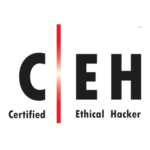Web Application Security Testing
Secure your web applications against the latest cyber security threats





Web Application Security Testing: Ensuring Digital Fortification
What is Web Application Security Testing?
Web Application Security Testing is the practice of evaluating the security of web applications by identifying vulnerabilities and weaknesses that can be exploited by malicious actors. It encompasses a range of techniques and methodologies aimed at ensuring that web applications are protected from various cyber threats, including but not limited to SQL injection, cross-site scripting (XSS), and cross-site request forgery (CSRF)
The Range Of Web Application Security Testing
Web application security testing typically involves the following aspects
- Scanning and Assessment : This involves using automated tools to scan web applications for known vulnerabilities and security issues. It is often the primary step in the testing process.
- Manual Testing : Skilled security professionals manually test the application to identify vulnerabilities that automated tools might miss. This can include source code review, penetration testing, and in-depth analysis
- Security Architecture Review : Assessing the application’s overall architecture to identify vulnerabilities or design flaws that could compromise security.
- Secure Development Training : Educating developers and stakeholders on secure coding practices to prevent security issues from arising in the first place.
- Threat Modeling : Identifying potential threats and vulnerabilities in the early stages of application development to mitigate risks.
- Reporting and Remediation : After testing, a detailed report is generated, highlighting vulnerabilities and suggesting remediation measures. This is a crucial step to address security concerns.
Importance of Web Application Security Testing
Web Application Security Testing is essential for various reasons
- 1. Data Protection
- 2. Reputation Management
- 3. Legal Compliance
- 4. Financial Impact
- 5. Preventing Downtime
In an age where data breaches are a daily occurrence, safeguarding sensitive information is a top priority. Web application security testing helps in identifying vulnerabilities that could lead to data leakage and breaches.
By proactively testing and securing web applications, you demonstrate your commitment to protecting user data and maintaining trust.
Many industries and regions have stringent regulations regarding data protection, and non-compliance can result in legal consequences. Web application security testing helps you meet these compliance requirements.
Testing and securing your web applications can save you from the financial repercussions of a data breach, including fines, legal fees, and loss of business.
Security breaches often result in system downtime, affecting business operations and causing financial losses. Robust security testing helps prevent these disruptions.
we used top industry level web application secruity testing software
There is a wide range of software available for web application security testing, each with its features and capabilities
- Burp Suite : Burp Suite is a widely used web vulnerability scanner and proxy tool.
- Nessus : Nessus is a comprehensive vulnerability scanning tool that can identify security weaknesses in web applications and other parts of your network.
- OWASP ZAP : The OWASP Zed Attack Proxy (ZAP) is an open-source security tool for finding vulnerabilities in web applications during development and testing.
- Acunetix : Acunetix is a robust web application security scanner that detects and helps you remediate a wide range of vulnerabilities.
- Qualys Web Application Scanning : Qualys offers a cloud-based web application scanner that automates the detection of web application vulnerabilities.
METHODOLOGY
Our Approach To Web Application Security Testing
Quint’s web application security testing methodology encompasses both authenticated and unauthenticated assessments. The following outlines our approach to ‘blackbox’ unauthenticated assessments, where minimal information is shared with the tester prior to the evaluation:
- 01. Reconnaissance
- 02. Vulnerability Scanning
- 03. Manual Testing
- 04. Injection Testing
- 05. Authentication and Authorization Testing
- 06. Session Management Testing
- 07. Data Validation and Input Testing
- 08. Error Handling and Logging Testing
Gathering information about the web application’s architecture, technologies used, and potential attack vectors.
Employing automated tools to identify common vulnerabilities and misconfigurations.
Conducting thorough manual testing to identify complex vulnerabilities that automated tools may miss.
Assessing the application for injection vulnerabilities, such as SQL injection and cross-site scripting (XSS).
Evaluating the effectiveness of user authentication and access control mechanisms.
Examining session handling mechanisms to identify any weaknesses or vulnerabilities.
Verifying the proper validation of user inputs to prevent common vulnerabilities like command injection and XSS attacks.
Assessing error handling mechanisms and logging practices for potential security risks.

Merits of Web Application Security Testing
Web application security testing offers numerous advantages, making it an indispensable part of any organization’s cybersecurity strategy.
- Proactive Risk Mitigation : By identifying and addressing vulnerabilities before they can be exploited, web application security testing allows organizations to be proactive in mitigating risks.
- Cost Savings : Addressing security issues early in the development cycle is generally less expensive than dealing with a security breach and its aftermath.
- Comprehensive Coverage : Security testing tools and methodologies cover a wide range of vulnerabilities, from common to obscure, ensuring a comprehensive assessment of your web applications.
- Improved Development Practices : Security testing can help developers adopt secure coding practices, leading to more secure applications in the long term.
- Compliance Adherence : For organizations subject to regulatory requirements, web application security testing is essential for compliance.
VULNERABILITIES
Web Application Vulnerabilities
Quint’s web application penetration testing service is designed to evaluate the security of both internally developed proprietary web applications and those sourced from third-party vendors.
Our comprehensive testing methodology includes assessing applications for vulnerabilities outlined in the OWASP Top 10, SANS25, OSSTMM, and so on which represents the most critical application security risks. Our expert web application security testing team will diligently identify vulnerabilities, including but not limited to:
- Injection flaws
- Authentication weaknesses
- Poor session management
- Broken access controls
- Security misconfigurations
- Database interaction errors
- Input validation problems
- Flaws in application logic
Benefits

Proactive Risk Identification

Uncovering Vulnerabilities

Strengthening Access Control

Enhancing Authentication

Ensuring Compliance Assurance
Process
Process For Web App Pen Testing
A web application penetration test follows a cyclic process, continually iterating until all vulnerabilities are identified and addressed. It involves replicating attacker techniques, focusing on the web application environment and setup. The process includes scoping, information gathering, network mapping, threat modeling, attack execution, and reporting. The testing concludes with a customized report that highlights vulnerabilities by severity and ease of exploitation, along with prioritized guidance for remediation.
Request a web app pen test quote
Expertise
Our Security Qualifications
Our team of ethical hackers and penetration testing service experts possess the skills and experience to identify the latest threats.










How Qunit Technologies Will Help You In Web Application Security Testing
At Qunit Technologies, we specialize in providing advanced solutions for web application security testing. Our proficiency and tools can enable your organization to achieve a higher level of security and protection. Here’s how Qunit Technologies can assist you:
The nature of threats is constantly changing, and organizations need to stay one step ahead. Partner with Qunit Technologies to secure your digital assets and maintain the integrity of your web applications.
- Modern Tools : We offer a suite of advanced web application security testing tools that are continually updated to keep pace with evolving threats.
- Customized Testing Tools : We understand that each web application is unique, and our testing services can be customized to suit your specific needs, ensuring that no vulnerability goes unnoticed.
- Comprehensive Testing : Our experts use a combination of automated scans, manual testing, and source code reviews to ensure a comprehensive assessment of your web applications.
- Proactive Approach : Qunit Technologies emphasizes a proactive approach to security testing, identifying vulnerabilities before they can be exploited.
- Detailed Reporting : We provide you with detailed and actionable reports that not only identify vulnerabilities but also offer guidance on remediation.
- Training and Support : Our services include training and support for your development and security teams, empowering them with the knowledge and skills needed to maintain secure web applications.
- Continuous Monitoring : Security is an ongoing process, and we offer continuous monitoring solutions to ensure that your web applications remain protected in the long term.
INDUSTRY-RECOGNIZED CERTIFICATE
Earn Customer Trust with a Unique and Verified Security Certificate
Boost your application’s security and showcase your commitment to safety. Our expert engineers will verify your fixes, providing you with a distinctive and publicly verifiable security certificate tailored specifically to your product.

Get a quick quote
Frequently Asked Question About Web App Pen Testing
Web application penetration testing is a type of ethical hacking engagement that evaluates the architecture, design, and configuration of web applications. The assessment aims to identify cyber security risks that could lead to unauthorized access or data exposure.
Web application penetration tests are typically conducted by skilled ethical hackers or professional security testing firms specializing in cyber security. These experts possess the knowledge and experience to identify vulnerabilities and provide actionable recommendations for mitigation.
To scope a web application penetration test, important information includes the target web application’s URL, functionality, user roles, access levels, authentication mechanisms, and any specific testing objectives or compliance requirements.
The duration of a web application security test depends on factors such as the complexity of the application, the depth of testing, and the identified scope. Typically, web application security tests can range from a few days to a few weeks.
Web application testing is recommended for any business that has web applications in use, particularly those handling sensitive data or serving critical functions. It helps identify vulnerabilities and strengthen security defenses, reducing the risk of data breaches and unauthorized access.
Web application testing focuses specifically on assessing vulnerabilities within web applications, such as those accessible through a browser. Network penetration testing, on the other hand, examines network infrastructure, devices, and protocols to identify weaknesses that could be exploited.
At the end of a web application penetration test, a detailed report is provided. It includes identified vulnerabilities, their severity, and recommended actions for remediation. The report helps organizations understand their security posture and prioritize necessary measures to enhance their web application security.
